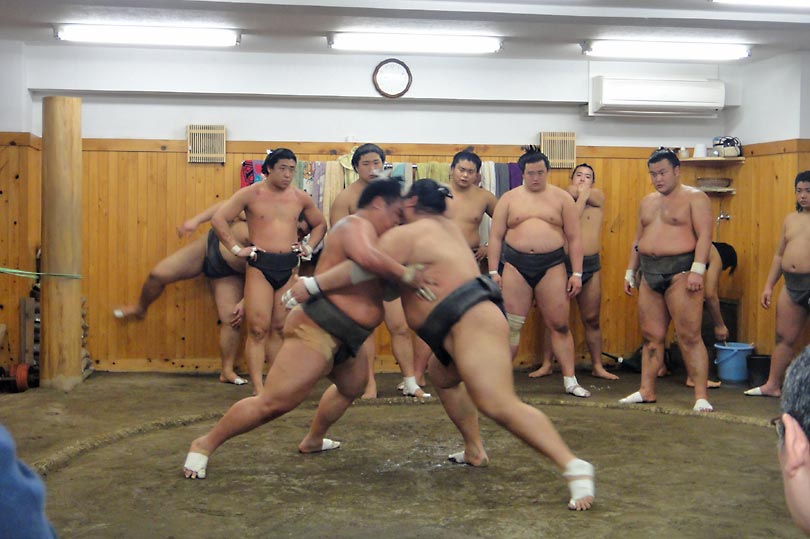Disclosure: As an Amazon Associate I earn from qualifying purchases on this site. This post might also contain some additional affiliate links. At no extra cost to you, I may receive a commission from these links to help fund this blog.
Sumo wrestling is a big part of Japanese culture and is actually Japan’s national sport. And being able to see sumo wrestling in Tokyo is something of a must-do experience.
As one of the world’s oldest sports, sumo isn’t just entertainment. There is much ritual and tradition involved. Matches are short but intense, often lasting only a few seconds or minutes. Plus every movement has symbolic meaning, from the salt purification thrown before a bout to the ceremonial stomping of feet to drive away evil spirits.
If you have a Japan Bucket List of any description, then watching sumo wrestling in Tokyo is almost certainly on there. It’s one of the most unique experiences you can have in Japan and it offers a fascinating window into the country’s traditions.
When is sumo wrestling season in Tokyo?
The best way to see sumo wrestling in Japan is by attending one of the official tournaments. These tournaments are held six times a year across the country, with three grand sumo tournaments taking place in Tokyo in January, May and September. If you’re keen to attend a tournament, then aligning your trip with one of these events is ideal.
But what if your visit doesn’t line up with tournament season?
My answer is to visit a sumo stable.

What is a sumo stable?
Sumo stables are essentially a combination of training facility and dormitory where wrestlers live, eat, sleep and train together under the supervision of a stablemaster. Visiting a stable gives you the opportunity to take an authentic glimpse into the demanding world of the sport. It’s not really touted as a tourist attraction as such but we went along to one and were able to watch the wrestlers through the window for their morning practice.
Unlike the spectacle of the stadium, this is sumo up close.

Where can I visit a sumo stable in Tokyo?
We went to the Arashio-beya which is around a minutes walk from the A2 exit of Hamacho Station on the Toei Subway Shinjuku Line. Practice takes place between 7.30am and 10am. Their website does have a Japanese script and a phone number to call so you can check in advance if the practice is on the next day, which I did. Unfortunately I couldn’t understand the response despite following the script! I can’t remember if we asked our hotel to call on our behalf or just showed up but it all worked out ok.
You’re unlikely to stay and watch the full length of training as it can feel a little crowded by the window standing among the wrestler’s bicycles and other gawping tourists, but it’s definitely worth stopping by for the experience.

Tips for visiting a sumo stable
-
Arrive early – Training starts promptly and spots by the window can fill up.
-
Be respectful – Keep noise down and don’t knock on the windows.
-
Check schedules – Practices aren’t guaranteed every day, especially after tournaments.
-
Stay briefly – You probably won’t watch the full session but even 15 minutes or so gives a worthwhile experience.
Being able to watch sumo wrestling in Tokyo is something truly memorable. Witnessing one of Japan’s oldest traditions is a worthwhile addition to any Tokyo itinerary.
If you liked this post then you might also like:

